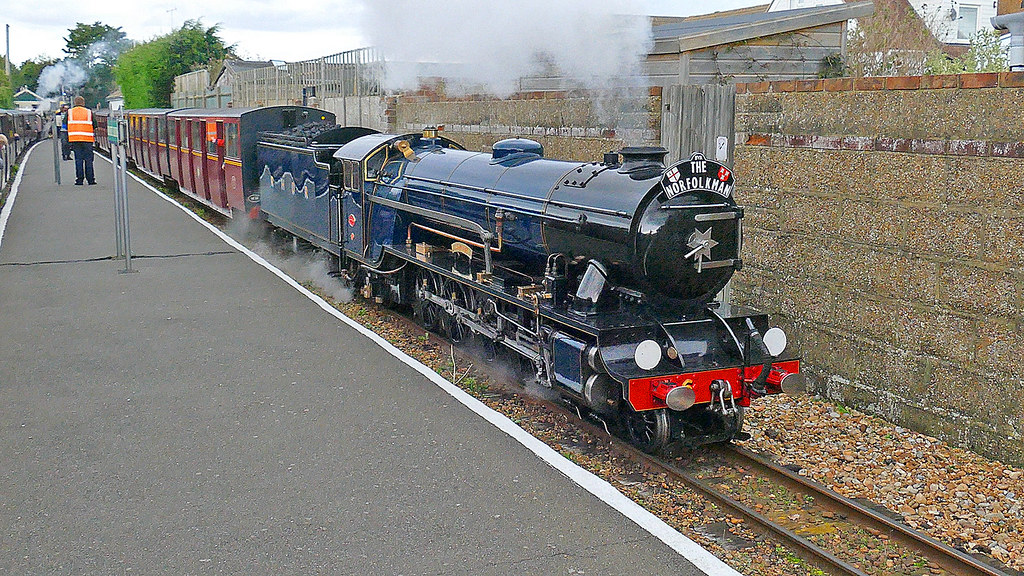#dymchurch
Text

Peachy Pie is sinking in to some pie, mash and liqour (apparently a traditional British meal, we were told).
In Dymchurch, in Kent, England.
49 notes
·
View notes
Text
Dymchurch


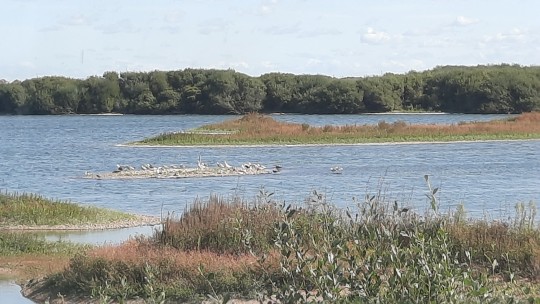






1 note
·
View note
Photo

#tired #sleepy #boys #fatherandson #dayout #miniaturerailway #kent #dymchurch #uk #bonding (at Dymchurch RHDR Station) https://www.instagram.com/p/CfOks9-oXFZ/?igshid=NGJjMDIxMWI=
0 notes
Text

Greatstone
By the Romney, Hythe and Dymchurch Railway
~ N. Cramer Roberts (British, 20thc), circa 1929
4 notes
·
View notes
Text
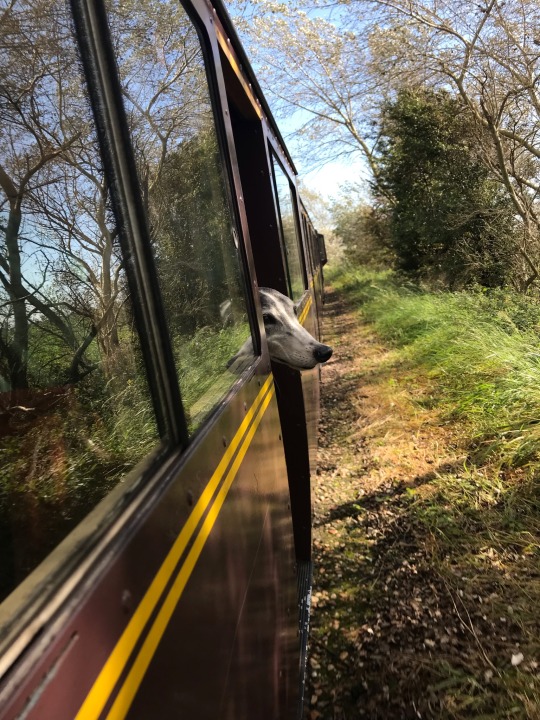
#miniature railway#Romney hythe dymchurch railway#British railways#greyhound#cute dogs#dogs on trains#dogs on tumblr#holiday#dogstagram#dogs of tumblr#photography#film
0 notes
Text

British Home Guard operating the Romney, Hythe And Dymchurch Railway narrow gauge railway as an improvised armoured train.
Originally built as a tourist attraction featuring miniature versions of standard gauge steam locomotives pulling passenger carriages, during the war, the railway, being so close to the coast and fearing the possibility of a German invasion, built this armoured train fitted with Lewis guns and Boys anti tank rifles.
68 notes
·
View notes
Photo
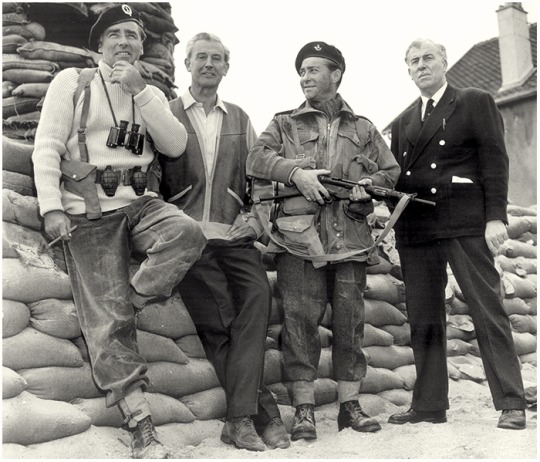
I never admitted to anybody during my entire military service that I had been an actor. I was terrified that I would be put in charge of Ensa [Entertainments' National Service Association]. Not even my closest friends knew I was an actor. I told them I was reading English at St Andrews University.
- Richard Todd
In his heyday in the 1950s and 1960s, Richard Todd was Britain’s leading matinee idol. If you love old movies, you’ll have seen Todd in one of his starring roles in “The Virgin Queen” opposite Bette Davis, “Stage Struck” with Marlene Dietrich, or “The Dam Busters” for which he won a Golden Globe Award. He was the tough little Scotsman in the wartime weepie “The Hasty Heart” and had audiences madly hunting for hankies.
Those were the days when Todd streaked across North American film screens as virtually every romantic hero from Rob Roy to Robin Hood. Ian Fleming chose him to play James Bond in “Dr. No” in 1962, but a schedule clash meant Sean Connery stepped into the role.
Little less known is the fact that he was also among the first British soldiers and the first Irishman to land in Normandy on D Day. More specifically, he participated in Operation Tonga during the D-Day landings in Normandy on 6 June 1944.
So it must have been surreal for Richard Todd the hearthrob actor to find himself playing Major John Howard in the epic movie ‘The Longest Day’ (1962) based on Cornelius Ryan’s book. Not least because he served with Howard and took part in the fighting at Pegasus Bridge that Major John Howard was tasked to secure on D Day.

Richard Todd was born in Dublin, Ireland, in 1919. His father was a medic in the British Army and, as his posting required, the early years of his life were spent in India. The family settled in Devon upon their return to England, and Richard was educated at Shrewsbury Public School, in Shropshire. The theatre was his first love, and he furthered his dramatic skills at the Italia Conti school, thereafter moving to Scotland where he helped to form the Dundee Repertory Theatre.
When War was declared, Todd went to St. Andrew's University on the following day to volunteer. He was not a member of the University, but he not only convinced the selection unit that he was, but also added that he had been reading English there for six months, and that he had obtained a Cert A in his school cadet corps; a key point to being accepted as an officer. Despite success in passing off this invented career, Todd was to be disappointed by a lack of interest in him thereafter.

Becoming increasingly desperate to get into the War before it ended, he sent numerous letters to the War Office to press his case, which, in June 1940, was finally noticed.
Accepted by the King's Own Yorkshire Light Infantry, Todd went to Sandhurst to receive his officer training. He had a very lucky escape here when he was in a corridor on the second floor of a building when it was hit by a bomb, and he was blown into the garden outside by the blast. He got to his feet in the darkness and did not feel particularly affected by it, but an examination by torchlight revealed that his whole body was covered in blood from numerous small wounds.
A spell his hospital delayed his passing out from Sandhurst until early 1941. Celebrating in London, he narrowly avoided death again when he found his usual haunt, the Cafe de Paris, was too crowded to admit him and so he went elsewhere; it was hit by a bomb that same night and 84 people were killed.
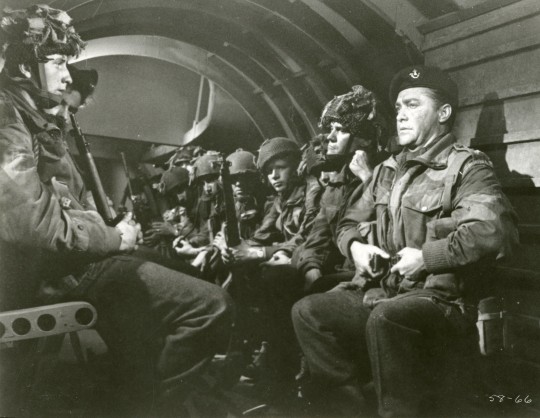
His Battalion, the 2nd/4th Battalion The King's Own Yorkshire Light Infantry, was posted to XII Corps in defence of Kent, where a German invasion if it came would almost certainly land. Todd was given command of the infantry in the Dymchurch Redoubt, a fort of the Napoleonic era mounting two six-inch guns.
In the event of an invasion, this would certainly have been a primary target for the enemy, and those manning it were told that, with the main defensive line far to their rear, they would be left to fight to the end. General Montgomery commanded XII Corps at this time, and his characteristic emphasis on training and preparedness led to the formation of the first Battle Schools. Richard Todd attended one of these, and the experience allowed him to run his own School when, in December 1941, he was sent to Iceland with the 1st/4th King's Own Light Infantry to be trained in arctic and mountain warfare.
Returning to England in September 1942, he eventually ended up in the 7th (Light Infantry) Parachute Battalion of the 6th Airborne Division. He was among troops of the 7th (Light Infantry) Parachute Battalion who, at 00:40 hours on 6 June 1944, landed behind the Normandy beaches in a cornfield, perilously close to tracer fire.
Todd scrambled into a wood and with 150 other paratroopers reached Pegasus and Ranville bridges, vital crossings to allow Allied forces to break out from the beachheads into Normandy. They had been seized by a glider force from the Ox and Bucks Light Infantry under the command of Major John Howard, who needed reinforcements to fend off ferocious German attacks.
In his memoirs, Caught in the Act, Todd would write of the carnage, “There was no cessation in the Germans' probing with patrols and counter-attacks, some led by tanks, and the regimental aid post was overrun in the early hours. The wounded being tended there were all killed where they lay. There was sporadic enemy mortar and artillery fire we could do nothing about. One shell landed in a hedge near me, killing a couple of our men.”
Todd would go on and see action at the Battle of the Bulge and push into the Rhine into Germany. After VE day, his division returned to the UK for a few weeks, then was sent on counter-insurgency operations in Palestine. During this posting he was seriously injured when his Jeep overturned, breaking both shoulders and receiving a concussion. He returned to the UK to be demobilised in 1946.
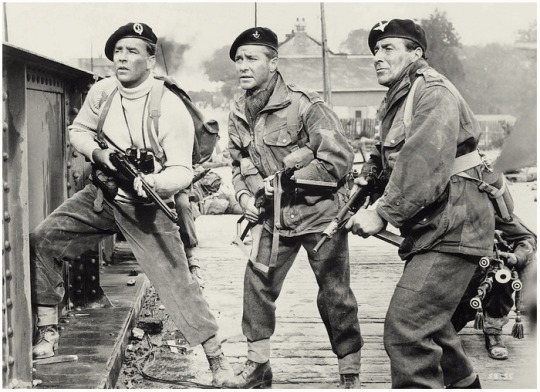
In 1962, Todd was given the part of Major John Howard in the film adaptation of Cornelius Ryan's book about the D-Day landings, ‘The Longest Day’ (1962). Due to the nature of cinema, it was impossible for the film to give a thorough reflection of the role of the 6th Airborne Division during the Invasion, and as such their activities were solely represented by a reconstruction of the capture of Bénouville Bridge by Howard's coup-de-main force. Although briefly mentioned, the role of the 7th Battalion in the defence of the western bridgehead was largely ignored, and so it appeared as if the defence of the bridge rested only on Howard's men.

Naturally, the omission of their fierce defence of Bénouville caused some resentment amongst veterans, not least because one of their own was championing this re-working of history. Todd, however, regarded ‘The Longest Day’ (1962) as a film rather than a documentary, and his part in it was simply that of an actor doing as he was told.
Richard Todd would never have guessed, that in 17 years since he was on Pegasus Bridge as a paratrooper that he would standing there again as an actor portraying Major John Howard who was given the order: 'Hold,… until relieved'. It had to be Richard Todd’s 'twilight-zone' moment.
The ‘relieve’ for Howard had to come from Lord Lovat and his troops, who had landed on SWORD Beach, and were legging it towards Pegasus Bridge.
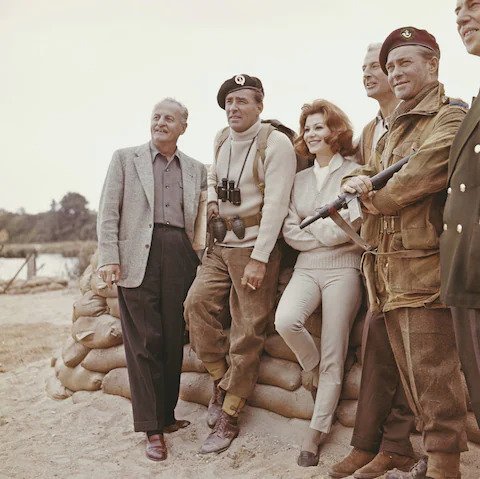
Before the shooting of the scenes were started at Pegasus Bridge, the film producer of The Longest Day, Darryl F. Zanuck, had the real life Lord Lovat and Major John Howard brought over to meet the men who were going to portray them (Peter Lawford portrayed Lord Lovat). The men had not seen each other since 6 June 1944.
Photo (above). From L-R: Peter Lawford, Lord Lovat, Richard Todd, Major John Howard.
#todd#richard todd#quote#british army#D Day#DDay#Normandy#pegasus bridge#war#second world war#major john howard#parachute#battle#actor#soldier#paratrooper#the longest day#film#movie#cinema#britain
109 notes
·
View notes
Text
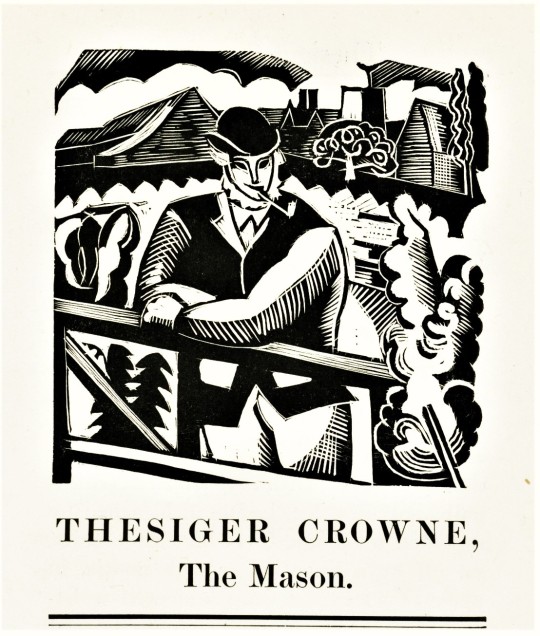




Wood Engraving Wednesday
PAUL NASH
British painter, war artist, designer, illustrator, and wood engraver Paul Nash (1889-1946) was influential in the development of modern English art and was a prominent member of the Society of Wood Engravers that was co-founded by his younger brother John Nash in 1920.
In the 1920s, he began to produce wood-engraved illustrations for works by noted English authors, including this collection of character studies, Cotswold Characters by English poet and playwright John Drinkwater (1882-1937), published in New Haven, Connecticut, by Yale University Press in 1921. These were Nash's first set of wood engravings to be published as book illustrations.
Besides publishing his first wood-engraved book illustrations, 1921 was a very significant year in Nash's short life. In that year, Nash's close friend, the artist and designer Claud Lovat Fraser, died; Nash displayed his textile designs at an exhibition at Heal's in London; and he began exhibiting a series of health issues related to war trauma that we would call PTSD today, which occasioned his move to Dymchurch in southeast England for his health, where he would produce an important series of seawall and seascape paintings.
Our copy of Cotswold Characters is another donation from the estate of our late friend Dennis Bayuzick.
View other posts related to Paul Nash.
View other books from the collection of Dennis Bayuzick.
View more posts with wood engravings!
#Wood Engraving Wednesday#wood engravings#wood engravers#Paul Nash#Cotswold Characters#John Drinkwater#Yale University Press#Dennis Bayuzick
36 notes
·
View notes
Text
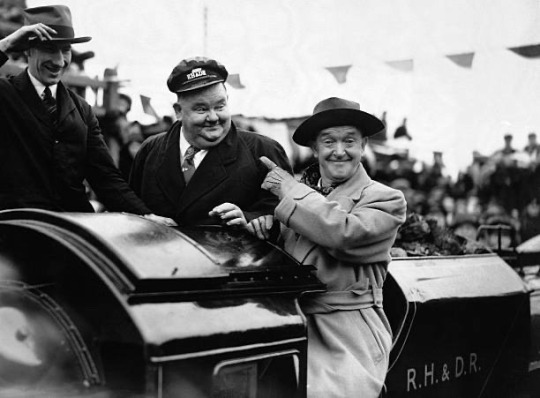
Laurel and Hardy drive the inaugural train at the 21st birthday party for the Romney Hythe and Dymchurch Railway in 1947.
65 notes
·
View notes
Text



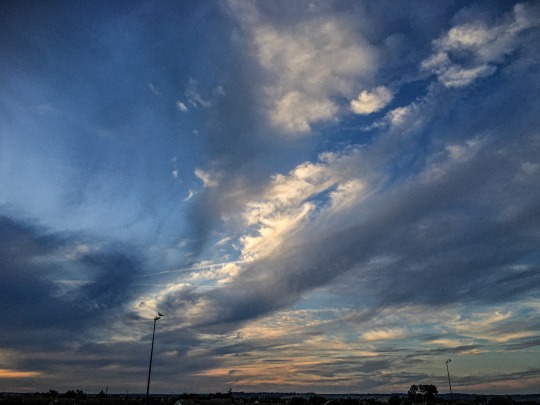

Good morning besties…
#CloudGrab captures on the beach at Dymchurch, Kent - 28.07.23 💎 (5 takes) ⚓️
#cloudgrab#landscape#sky#clouds#original photography#countryside#sunset#sleepingwell’s photos#skygrab#cloudcore
9 notes
·
View notes
Text
The railway lines on Seidrey are the Gunnigrind & Tarfalam Line, Ben Fisag Branch, & Kirktobaness Light Railway, and the Tarfalam, Chraig, & Laughof Railway
The stations along the railways (and their Scots Gaelic translations
Main Line
Mainland from Wilkhaven, connecting to the Far North Line at Fearn
Tarfalam (Tarsainn Falamh)
• Tarfalam Chraig & Langhof Railway
Dochas (Dóchas)
Lubadmore (Lùbadh Mòr)
• Dairy
Gunn Castle (Caisteal Guinnich)
• Kirktobaness Light Railway
• Guinnich Brewery
Tradham (Ag Ionaltradh Neamh)
• Farm
Samchair (Sàmhchair mu Dheireadh)
Gunnigrind (Port O' Guinnich)
• Ben Fisag Branch
• MOD
• Main Shed
• Port/Fishing
•Stewart's Holiday Camp
Kirktobaness Light Railway
Gunn Castle (Caisteal Guinnich)
• Mainline
• Guinnich Distillery
Kirktobaness (Caisteal ri Taobh an Eas)
Ben Fisag Branch (Beinn Phiseag)
Gunnigrind (Port O' Guinnich)
• Mainline
• MOD
• Main Shed
• Port/Fishing
• Holiday Camp
Bailanns (Bhaile Anns na Beanntan)
• Bailanns Distillery
Gemsted (Áite Falaich)
• Game Lodge
Hörgr (Aoradh)
• Stone Quarry
Tarfalam, Chraig, & Langhof Railway
Tarfalam (Tarsainn Falamh)
• Mainline
Chraig Castle (Caisteal Air a' Chreig)
Mountain Farms
Laughof Central (Bath Earrach Teth)
• Stewart's Hot Spring Resort
• Laughof Academy
Laughof Main Street
Hiking Hault
Bonniebear (Bonn na Bearraidh)
• Fishing Town
The History
In 1868 the Tarfalam & Gunnigrind Railway was formed, and started construction from the Sutherland Railway station at Fearn, crossing the water from the mainland at Wilkhaven to the island at Gunnigrind. Construction was finished in 1874. It was absorbed into the Highland in 1884 (they were already providing services along the line), the same time as the Sutherland, Duke of Sutherland Railway, and Sutherland & Caithness Railway.
In 1890 the Highland built the branch up to Aoradh and double tracked the entire line from Inverness to Gunnigrind, strengthening the line more than they would ever need (end enough for the LMS to even run Pacifics on it in the 30s).
The Kirktobaness Light Railway started construction in 1900, and was opened in 1902, a part of the Highland, but heavily subsidized by the chief of Clan Gunn at the time. Despite the station name of Gunn Castle, the actual castle was around 7 miles away at Kirktobaness, so a light railway was built out to it. The railway had bypassed it in the beginning due to the 1 in 45 gradients required to the town and castle
In 1915 a naval base was constructed at Gunnigrind.
In 1923 the Highland railway was grouped into the LMS, however other than a new coat of paint, the roster didn't change much. The line, like most of the surrounding lines, was given the shed code 32A.
In 1928 a Gunnigrind local and millionaire, Roger Masters, took a visit to Kent and became infatuated with the the Romney, Hythe and Dymchurch Railway, and decided he wanted to bring such small charm to Seidrey. He got his friend Emmett Stewart in on the action, and next year a Light Railway Order was applied for and granted for a fifteen inch gauge line from Tarfalam to the hot springs at Laughof, and in 1930 construction began on the Tarfalam, Chraig, & Laughof Railway (they also stole the locomotive designer, Henry Greenly, from the RH&DR in March 1929). The railway was opened in 1931 from Tarfalam to Laughof. The railway helped build Mr. Stewart's hot springs spa and resort at Laughof, and then bring passengers to it. It also had sidings at the local farms to haul wool to the mainline.
In 1929 the LMS started testing 6299 Fury on the line and due to it's early faults, a year later a new express locomotive arrived, Royal Scot class 6168 The Girl Guide
Other engines started to arrive through the years, including Patriots, moguls, 8fs, Stanier red and black 5's, a Pacific, 6204 Princess Louise, and even the Turbomotive.
In 1937 the TC&L was extended to the seaside town of Bonniebear. Fish trains were attempted, to surprisingly moderate success.
During the war, the naval base got a lot of traffic, and an Austerity tank, a WD 2-8-0 and two 2-10-0s were moved to the region, and stayed, even after the war.
The 2-10-0s were absolutely crucial on the Ben Fisag Branch, as the rails at the stone quarry past Hörgr were so light that none of the LMS built engines assigned to the region could run on them, so they were being run by increasingly tired HR locomotives until the 2-10-0s showed up.
One oddity about the Gunnigrind & Tarfalam is it is a near perfect microcosm of the WCML, so experimental locomotives were sent here for trials. In December 1947 this was the case for 6256 Sir William A. Stainer, F.R.S. and 10000, who found their homes here (almost all LMS and LMS ordered experimental diesels also found their home here). Because of this, the Gunnigrind sheds had a heavy maintenance sheds for diesels, always stocked with parts for the sometimes temperamental LMS diesels.
BR's takeover once again didn't change much at first, only a few BR standard class 5 and 6s showed up. The shed code was changed to 60F
However, in 1966, the Benching Axe fell for both the Kirktobaness Light Railway and Ben Fisag Branch, as standard classes of diesels took over the island.
Named Passenger Trains and their stops
The Black Wolf (Sleeper Train) (Hauled by Royal Scots, Rebuilt Patriots, or Pacifics)
Gunnigrind
Tarfalam
Perth
Stirling
Glasgow Buchanan Street (later Queen Street)
Symington Junction
Carlisle Kingmoor
Preston
Crewe
Stafford
Rugby
London Euston (from 1966-1981 Kensington Olympia)
Glasgow Highlander (Hauled by Patriots or Jubilees)
Gunnigrind
Tarfalam
Perth
Dunblane
Stirling
Glasgow Buchanan Street (later Queen Street)
Edinburgh Highlander (Hauled by Patriots or Jubilees)
Gunnigrind
Tarfalam
Perth
Dunblane
Stirling
Falkirk Grahamston
Edinburgh Princes Street (later Edinburgh Waverly)
Aberdeen Highlander (Hauled by Patriots or Jubilees)
Gunnigrind
Tarfalam
Keith
Aberdeen Joint
Seidr Pullman / Seidrian (Runs opposite days) (Hauled by Royal Scots, Rebuilt Patriots, or Pacifics)
Gunnigrind
Tarfalam
Perth
Stirling
Glasgow Buchanan Street (later Queen Street)
Symington Junction
Carlisle Kingmoor
Workington
Whitehaven
Barrow-in-Furnesa (Engine Change to NWR)
Crovan's Gate
Tidmouth
The Spa Express
Tarfalam
Laughof
Preservation
A large amount of steam locomotives from this line survived. When withdrawing old HR engines, the railway liked to donate one of a class to a village along the line. Once this was unreasonable, Roger Masters, the Creator of the Tarfalam Chraig & Langhof Railway, created a "scrap yard" where he could store engines.
In 1948, the Guinnich Distillery purchased the HR Clan class locomotive 54765 Clan Stewart (the express engines of the line until 1930, and which has been retired in 1945) as well as the wooden Pullman coaches that ran the Seidr Pullman to use as a display and diner/bar.
When the LMS express engines were retired, they were put on display, some at the Gunnigrind Resort, some others at the Butlins Ayr resort.
In 1966, when the Ben Fisag Branch closed, preservationists, led by Mr. Masters, managed to come up with enough money to buy the branch and all locomotives that served it and the two tank engines that ran the Kirktobaness Light Railway, creating the Ben Fisag Railway.
In 1968, they also purchased the (at that point disused) Gunnigrind engine facilities, retrofitting the diesel works so they could also maintain their steam engines, and started restoring some of them to operation. They started purchasing the Highland Railway locomotives on display around the island, restoring them to operating condition.
In 1971 the train bought by Guinnich Distillery was restored at the works for operation, now that the distillery could do an actual running dinner train on the mainline.
Throughout the 1980s, the engines that had been displayed at holiday camps were purchased back by the museum and trust for mainline use.
All names and history are subject to change as I figure more working solutions, this is a living story.
#Seidrey#trains#this is a massive thing sorryyyyy#but im passionate#vaguely ttte#anyone who speaks scots gaelic i am sorry i dont and am having to use google translate#lore
2 notes
·
View notes
Text
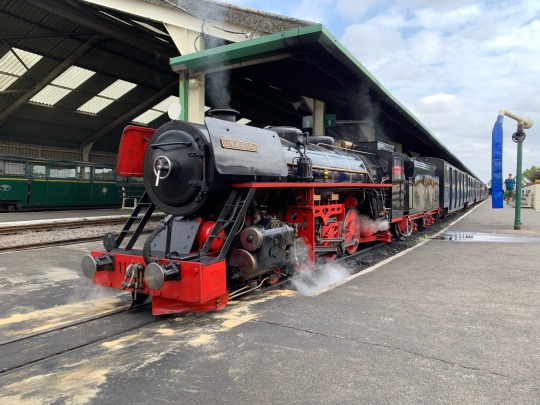
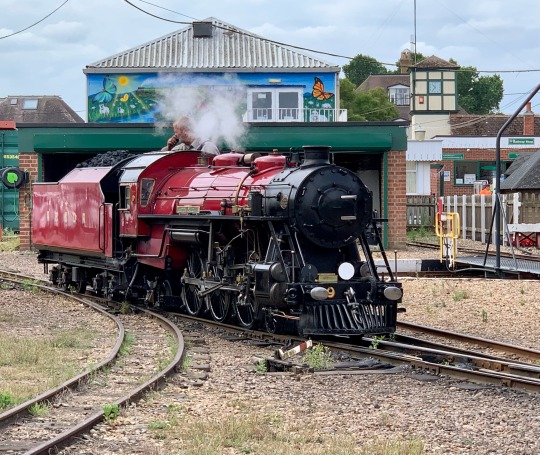
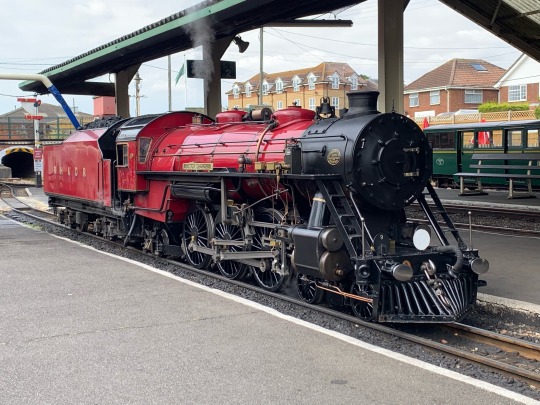
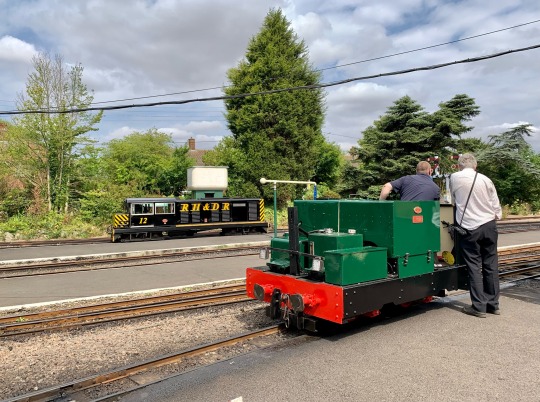




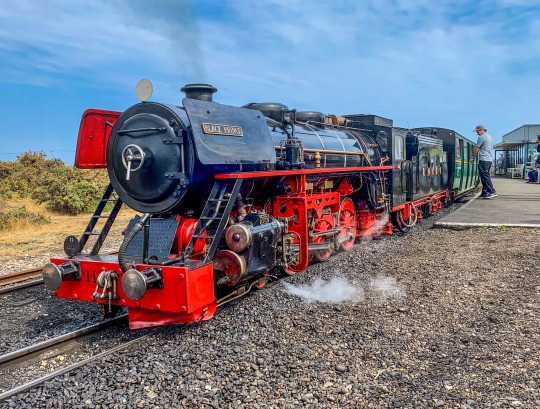
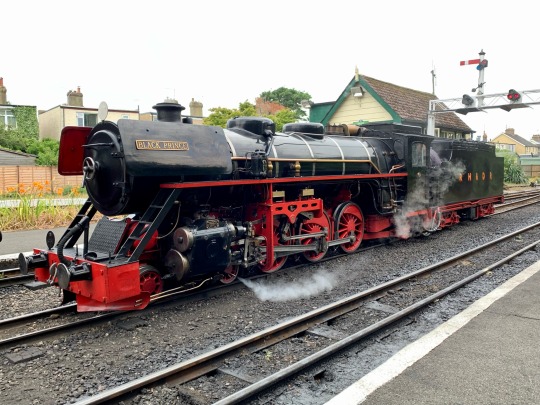
Romney , Hythe & Dymchurch Railway, narrow gauge railway across Romney Marsh.
5 notes
·
View notes
Text
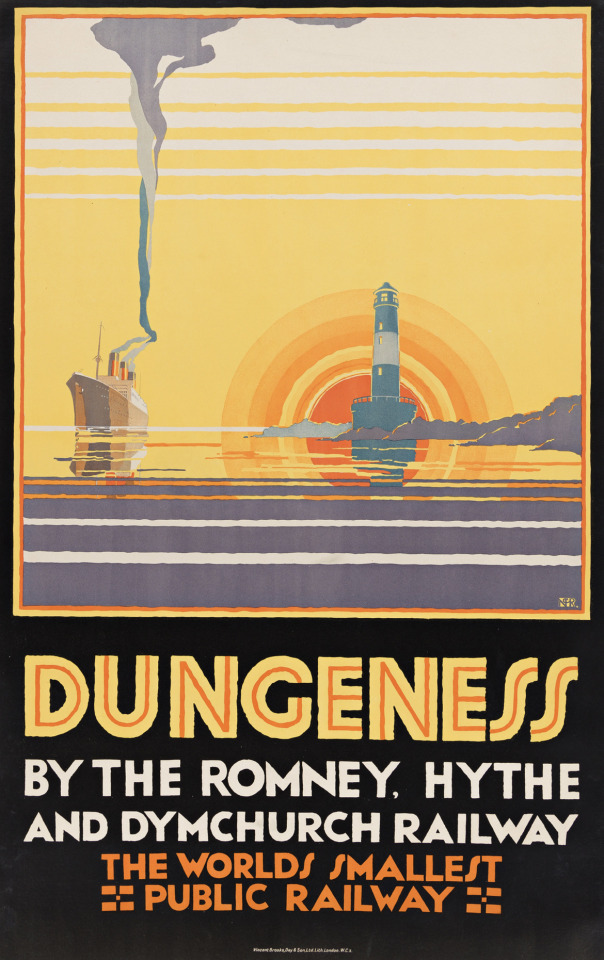
Dungeness
By the Romney, Hythe and Dymchurch Railway
~ N. Cramer Roberts (British, 20thc), circa 1928
4 notes
·
View notes
Video
RD23637sc. SAMSON arriving at Romney Sands. by Ron Fisher
Via Flickr:
RD23637sc. Over the weekend 23rd / 24th October, 2021, the 15 inch gauge Romney, Hythe & Dymchurch Railway in Kent held their annual Autumn Steam and Diesel Gala. And a splendid gala it was too! This shot shows 4-8-2 SAMSON at Romney Sands and it’s a screenshot from a video that I shot that weekend. This can be see here: www.youtube.com/watch?v=zNJIPCSkWqQ&list=PLFsbViNeGSH... Many thanks are due to the many staff and volunteers of the RHDR that made it possible. Saturday, 23rd October, 2021. Copyright © Ron Fisher 2022. ***The full list of videos shot over that weekend is here if anyone would like to have a look: www.youtube.com/playlist?list=PLFsbViNeGSHnOCAov6_bmf6ACj...
5 notes
·
View notes

